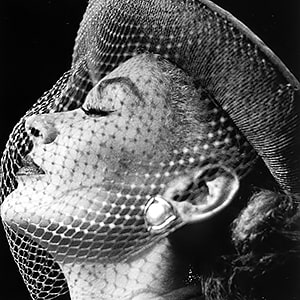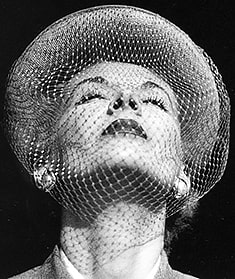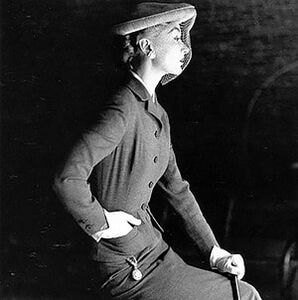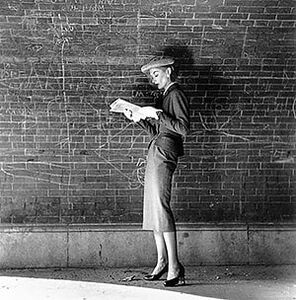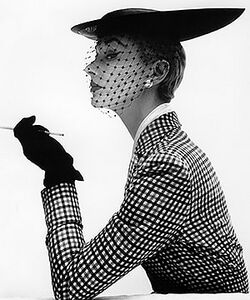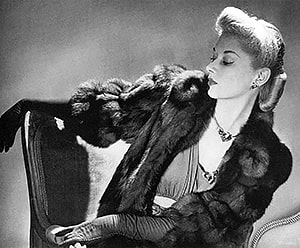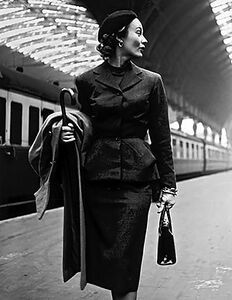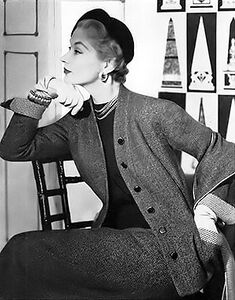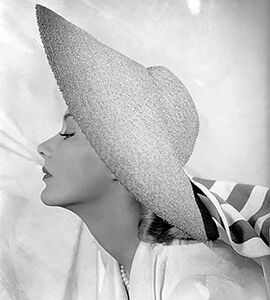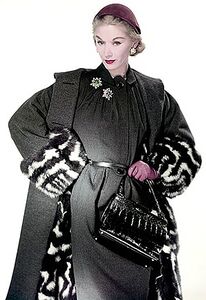Liisa Salmela
Liisa Salmela | |
|---|---|
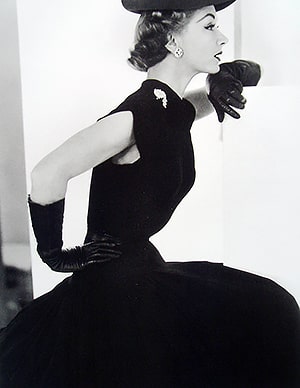 Liisa Salmela, 1964 | |
| Born | 9 January 1928 |
| Died | 29 November 2008 (aged 80) |
| Nationality |
|
| Occupation |
|
Liisa Salmela (9 January 1928 – 29 November 2008) was a Gylian music journalist, media personality, model, sculptor, and photographer. Sometimes referred to as "the mother of Gylian music journalism", she and Mana Kirishima are considered among the most influential on the form.
Early life
Liisa was born on 9 January 1928 in Alemarr. Her parents were a dentist and a clothesmaker, and they encouraged her artistic interests. As a child, she took up painting, sculpting, and dancing. She also learned the piano.
She studied dance and classical music at the Royal Conservatory. She moved to Gylias in 1959.
Career
Music journalism
Liisa was hired as a writer by Musical Update in 1959. She then became its editor in 1960, a post she would hold for two decades. Under her tenure, Musical Update had its identity revamped and became one of Gylias' preeminent music magazines.
She had a distinctive writing style, avoiding metaphorical language and striving for journalistic accuracy. Possessed of either absolute pitch or relative pitch (she was not sure herself), she extensively used music theory in her reviews to describe what she was listening to. Instead of attempting to maintain journalistic distance, she openly admitted her aesthetic preferences.
Her lifelong passion was to raise pop music to the level of high culture: she valued erudition, complexity, and ambition. She was an early supporter of The Beaties, writing the first analysis of their discography (The Beaties' Songs) in 1970.
She championed Gylian Sound, progressive pop and progressive rock, and praised Susan Shelley and Charlotte Böttcher as two of the greatest musicians Gylias had produced, while acknowledging Evelin Tanli as one of its greatest lyricists. She also wrote extensively on art music, including influential reviews of the work of Susan Shelley, Kaida Rakodi, Sofia Demes, and Neira Tasei.
Liisa became one of the first music journalists to become nationally renowned. In the 1960s and 1970s, she and Mana Kirishima were considered the most influential reviewers of new releases.
The two had very different approaches: Liisa had an aristocratic image and treated pop music with the gravity and grandeur of high culture; Mana was youthful and populist, writing with enthusiasm and emphasising emotional response to music. The contrast helped define their respective music magazines, and they mutually respected each other's work. By coincidence, they also had the same birthdate, 15 years apart.
Television
Liisa nurtured ambitions to be a tastemaker, which led her to pursue national prominence in earnest. She began hosting Musical Discussions with Liisa Salmela on GTV2 in 1968.
The show's minimalist set-up came from her desire to focus on the music: it showed her sitting in front of a plain wall and talking directly to camera, using a record player to play the releases she discussed, and drawing musical graphs on paper to illustrate her points. She later replaced the paper with a whiteboard and a marker pen.
Reputation
At the height of her career, The National Record wrote, "she had the power to make or break an album with her pronouncement." Similarly, Silhouette wrote in a 1965 profile that she was almost as popular as the musicians she wrote about, or in some cases moreso. Her serious and learned treatment of popular music was excellently suited to the Groovy Gylias era.
While her approach of elevating pop music to high art was out of step with the Golden Revolution's egalitarianism and destruction of class-based differences, it still fit in with the ideals of socialised luxury and aristerokratia.
Liisa embraced her reputation as an "old fogey" with good humour. She cultivated an aristocratic persona, similar to Isabel Longstowe and Tamara Łempicka, and her on-screen persona deliberately bordered on self-parody. She was always fastidiously-dressed in public, and became known on screen for her precise elocution and coolly refined facial expressions, modeled after those of Tamara and Hedy Kiesler.
She made friends of many musicians, and was one of the leading lights of the Mişeyáke artistic scene, centred on the fabled nightclub Sibylla.
As an extension of her self-parodic "old fogey" image, Liisa nurtured an interest in pre-rock styles of music. She hailed Susan Shelley for her success in revitalising art music and light music and bringing them to new audiences.
She wrote the book The Strange Survival of Gylian Jazz, which discussed the way older styles of jazz such as straight-ahead jazz and swing music were transformed into pure program music — "the soundtrack to sex appeal". She credited Susan Shelley and Jenny Ford with doing the most to preserve traditional jazz styles in this manner: Susan for her composing career and using her prestige to help revitalise older styles of music, and Jenny for her insight about jazz's function as "excellent sultry music".
Later career
She stepped down as editor of Musical Update in 1981, but continued to write for the magazine and host Musical Discussions until her death. She appeared with Mana in The Beaties Anthology, the only figures outside the Beaties' inner circle to do so.
By the 1990s, she was recognised as the doyenne of Gylian music journalism, and many commentators remarked that she molded it in her image: making concern with accurate description and free use of musical theory and jargon fundamental characteristics.
She was most proud of Marisa Ibáñez Flores' remark, "Every Gylian music journalist is either a Liisist or anti-Liisist", and asked that it become her epitaph.
Other pursuits
Liisa began working as a photographic model in parallel with her career in music journalism. She initially used modelling as part of her quest to become nationally known, but soon it took a life of its own. She posed for famed photographers like Annemarie Beaulieu and Viviane Mayer, and used many of her model portraits to accompany her bylines and in the books she wrote. She described modelling as "still dancing".
She also worked as a dance teacher and photographer, and became a sculptor in the 1960s. She recorded some albums of her performing classical pieces on piano, and occasionally wrote or co-wrote lyrics for others.
Keen to preserve her "stark Nordic beauty" and figure, she was known for eating in small quantities. She would consume as many as 10 tiny meals a day. Isabel, one of her closest friends, recalled that for Liisa, "a tiny meal might mean only six grapes, one slice of cheese, a cracker, and half a glass of wine. She was always eating something, but never anything much."
Death
Liisa died on 29 November 2008 of natural causes while visiting Maveás.
She was survived by her husband and two children: Mia, a clothesmaker, and Tom, a designer.


